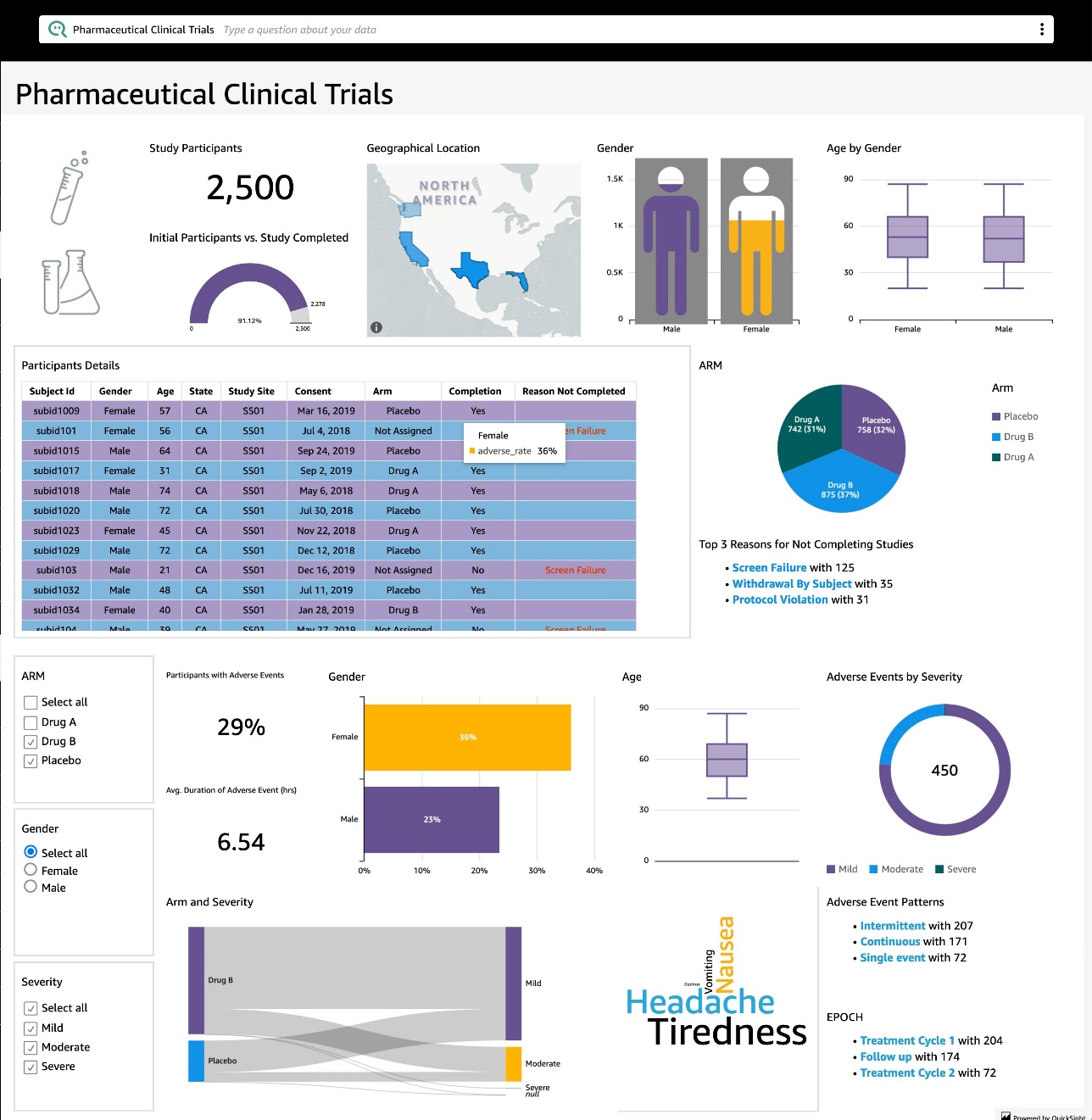AWS Big Data Blog
Enable users to ask questions about data using natural language within your applications by embedding Amazon QuickSight Q
Amazon QuickSight Q is a new machine learning-based capability in Amazon QuickSight that enables users to ask business questions in natural language and receive answers with relevant visualizations instantly to gain insights from data. QuickSight Q doesn’t depend on prebuilt dashboards or reports to answer questions, which removes the need for business intelligence (BI) teams […]
Detect anomalies on one million unique entities with Amazon OpenSearch Service
Amazon OpenSearch Service supports a highly performant, integrated anomaly detection engine that enables the real-time identification of anomalies in streaming data. Last year, we released high-cardinality anomaly detection (HCAD) to detect individual entities’ anomalies. With the 1.1 release, we have allowed you to monitor a million entities with steady, predictable performance. HCAD is easiest when […]
Export JSON data to Amazon S3 using Amazon Redshift UNLOAD
Amazon Redshift is a fast, scalable, secure, and fully managed cloud data warehouse that makes it simple and cost-effective to analyze all your data using standard SQL. Amazon Redshift offers up to three times better price performance than any other cloud data warehouse. Tens of thousands of customers use Amazon Redshift to process exabytes of […]
Build a data sharing workflow with AWS Lake Formation for your data mesh
A key benefit of a data mesh architecture is allowing different lines of business (LOBs) and organizational units to operate independently and offer their data as a product. This model not only allows organizations to scale, but also gives the end-to-end ownership of maintaining the product to data producers that are the domain experts of […]
Extract ServiceNow data using AWS Glue Studio in an Amazon S3 data lake and analyze using Amazon Athena
Many different cloud-based software as a service (SaaS) offerings are available in AWS. ServiceNow is one of the common cloud-based workflow automation platforms widely used by AWS customers. In the past few years, we saw a lot of customers who wanted to extract and integrate data from IT service management (ITSM) tools like ServiceNow for […]
Amazon Redshift at AWS re:Invent 2021 recap
The annual AWS re:Invent learning conference is an exciting time full of new product and program launches. At the first re:Invent conference in 2012, AWS announced Amazon Redshift. Since then, tens of thousands of customers have started using Amazon Redshift as their preferred cloud data warehouse. At re:Invent 2021, AWS announced several new Amazon Redshift […]
Doing more with less: Moving from transactional to stateful batch processing
Amazon processes hundreds of millions of financial transactions each day, including accounts receivable, accounts payable, royalties, amortizations, and remittances, from over a hundred different business entities. All of this data is sent to the eCommerce Financial Integration (eCFI) systems, where they are recorded in the subledger. Ensuring complete financial reconciliation at this scale is critical […]
Use AnalyticsIQ with Amazon QuickSight to gain insights for your business
Decisions are made every day in your organization that impact your business. Making the right decision at the right moment can deeply impact your organization’s growth and your customers. Likewise, having the right data and tools that generate insights into the data can empower your organization’s leaders to make the right decisions. In the healthcare […]
Automate building data lakes using AWS Service Catalog
Today, organizations spend a considerable amount of time understanding business processes, profiling data, and analyzing data from a variety of sources. The result is highly structured and organized data used primarily for reporting purposes. These traditional systems extract data from transactional systems that consist of metrics and attributes that describe different aspects of the business. […]
Build a REST API to enable data consumption from Amazon Redshift
API (Application Programming Interface) is a design pattern used to expose a platform or application to another party. APIs enable programs and applications to communicate with platforms and services, and can be designed to use REST (REpresentational State Transfer) as a software architecture style. APIs in OLTP (online transaction processing) are called frequently (tens to […]









